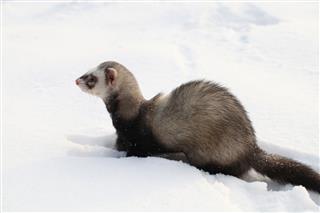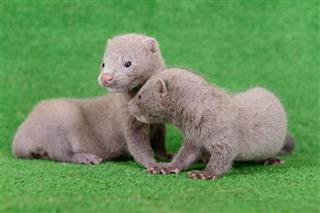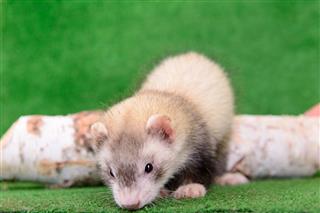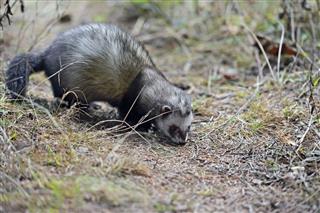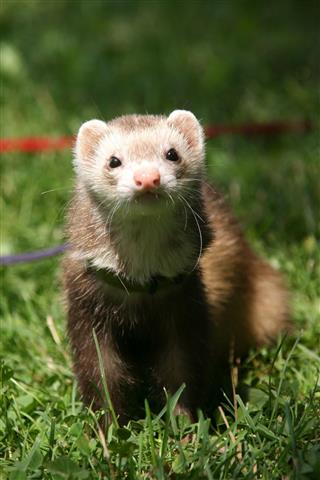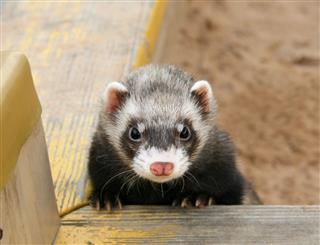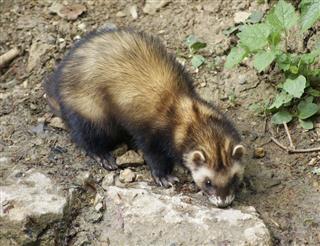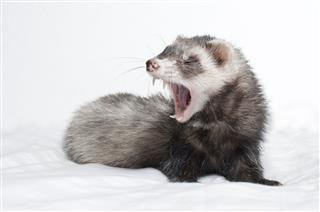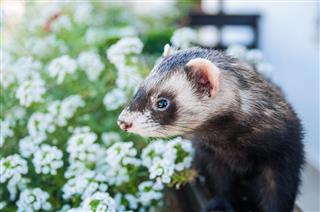
Weasels are small carnivorous mammals found in most places around the world such as North America, South America, Europe, Asia, and Northern regions of Africa, except Australia and its surrounding islands. They are extremely smart and quick creatures although their small size and stature may be deceiving.
The Latin name for weasels is Mustela. They are a part of the Mustelidae family, which also includes ferrets, otters, minks, badgers, tayras, and martens. Minks and ferrets are considered to be their closest relatives. Badgers, foxes, and birds of prey are their natural predators.
Weasels vary in color and size, but generally have slender bodies, rounded ears, and short legs. They have a reddish-brown coat with a yellowish-white belly.
Quick Facts
» According to the Integrated Taxonomic Information System, weasels are classified into 17 species.
» They are not naturally found in some countries. However, they have been introduced to countries like New Zealand for pest control measures as well as for keeping the rodent population and European rabbits under control.
» The least weasel is considered the smallest carnivore in the world. Its average body length is generally 6 to 8 inches and the tail is about 1.5 to 2 inches long.
» In spite of being so small, the least weasel can hunt down a prey about 5 times its size.
» The tropical weasel (Mustela africana), also called the Amazon weasel, is not found in Africa despite its name.



| Name | Range | IUCN Status |
| Tropical weasel (Mustela africana) | South America | LC |
| Mountain weasel (Mustela altaica) | Europe, Asia | NT |
| Stoat (Ermine or Short-tailed weasel) (Mustela erminea) | Europe, Asia, North America, New Zealand | LC |
| Steppe polecat (Mustela eversmannii) | Europe, Asia | LC |
| Colombian weasel (Mustela felipei) | South America | VU |
| Long-tailed weasel (Mustela frenata) | America | LC |
| Japanese weasel (Mustela itatsi) | Japan Sakhalin Is. (Russia) | LC |
| Yellow-bellied weasel (Mustela kathiah) | Southern Asia | LC |
| European mink (Mustela lutreola) | Europe, Northern Asia | CR |
| Indonesian mountain weasel (Mustela lutreolina) | Southern Asia | DD |
| Black-footed ferret (Mustela nigripes) | North America | EN |
| Least weasel (Mustela nivalis) | Europe, Asia, North America, NZ | LC |
| Malayan weasel (Mustela nudipes) | Southern Asia | LC |
| European polecat (Mustela putorius) | Europe, Northern Asia, NZ | LC |
| Siberian weasel (Mustela sibirica) | Europe, Asia | LC |
| Back-striped weasel (Mustela strigidorsa) | Southern Asia | LC |
| Egyptian weasel (Mustela subpalmata) | Egypt | LC |
* LC – Least Concern • EN – Endangered • CR – Critically Endangered • NT – Near Threatened • VU – Vulnerable • DD – Data Deficient
Features
- Newborn weasels are blind and open their eyes at 26 to 36 days after birth.
- Adults have a long slender body, generally with a dark or light brown coat on the outer side and white on the inner side.
- Long-tailed weasels, as the name suggests, have very long tails; almost half the size of their body and head put together.
- Both genders of long-tailed weasels have the same color.
- The Steppe Polecat (also known as the masked polecat) is larger in size than the European polecat.
- The back-striped variety have a silver streak that stretches from the back of the head to the end of the tail. It also has a yellowish-white line on their belly.
Habitat
- Weasels can live in different habitat, including lowlands, farmlands, woods, and hedges.
- They are found in areas with abundant water, and mark their territories through a pungent secretion from their anal scent glands.
- Long-tailed weasels are generally found in places which have a sizable rodent population and proximity to water.
- The mountain weasel, also known as ‘pale weasel’, is usually found in areas with a high altitude.
- Least weasel is usually found in fields, meadows, or forests.
Behavior
- They are exceptional swimmers and climbers.
- They do not hibernate, and are therefore active during summer and winter.
- Weasels generate a pungent odor with the help of their scent glands, when they are irritated. This odor is so strong that it can be smelt from a considerable distance, and is also used as a defense mechanism.
- A weasel doesn’t usually dig its own burrow. It takes over the nest of its victim or prey and lines it with leaves or fur to keep it warm during winter.
- When the long-tailed weasels are ready to attack or are frightened, they give away long chirps. The other sound made by them is a low trilling sound, heard when two weasels of the opposite sex meet.
- ‘Pop goes the weasel’ is a popular nursery rhyme in which these animals are mentioned. However, in reality they make a squelching-like sound.
Hunting Habits and Diet
- They are considered to be ferocious hunters and are often not afraid to confront animals bigger in size.
- Weasels are master predators. They are extremely quick and approach their prey quietly, pouncing on it after getting in range.
- Their long, slender bodies help them hunt their prey by chasing them deep into the burrows.
- Their technique of killing the prey is by biting the back of its neck.
- Short-tailed weasels are excellent hunters and prey on other smaller mammals like rats, rabbits, and squirrels.
- Their diet consists of rodents, frogs, birds, rabbits, and eggs.
- Ermines are known for killing more than they can consume immediately, hence they generally hoard the remaining prey. They never suck the blood of their prey, instead they lick it.
- Although considered nocturnal, long-tailed weasels hunt during the day too.
Weasels are considered as a threat by farmers who, in turn, trap or kill them to protect their livestock. Since ages, the fur from a weasel’s body is being used for making winter jackets and parkas. There have been numerous laws and restrictions laid upon the hunting and killing of weasels all over the world for fur, to protect this species from extinction. Interestingly, the black-footed ferret was declared extinct in 1979, until in 1981, a small group was discovered near Meeteetse, Wyoming. In spite of all these factors, they are listed as an animal of Least Concern by the IUCN.







